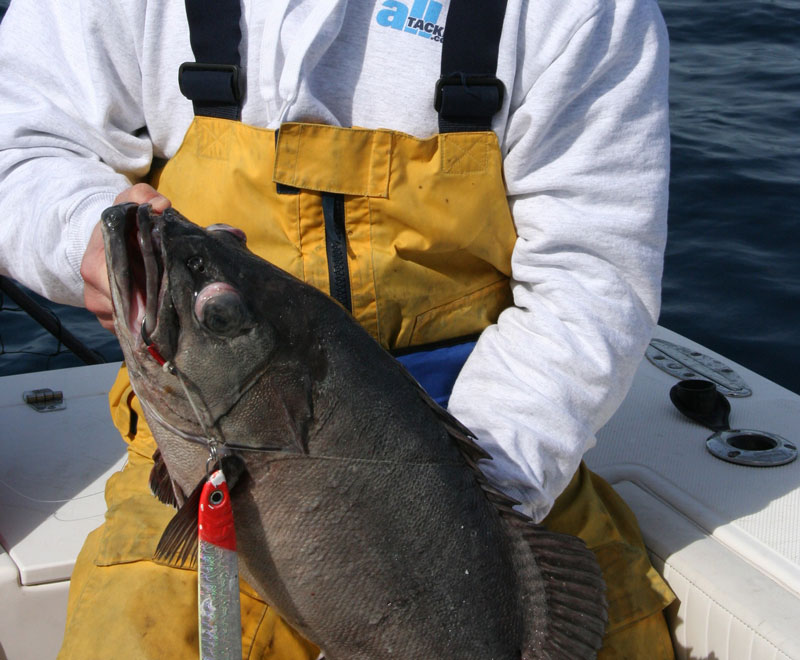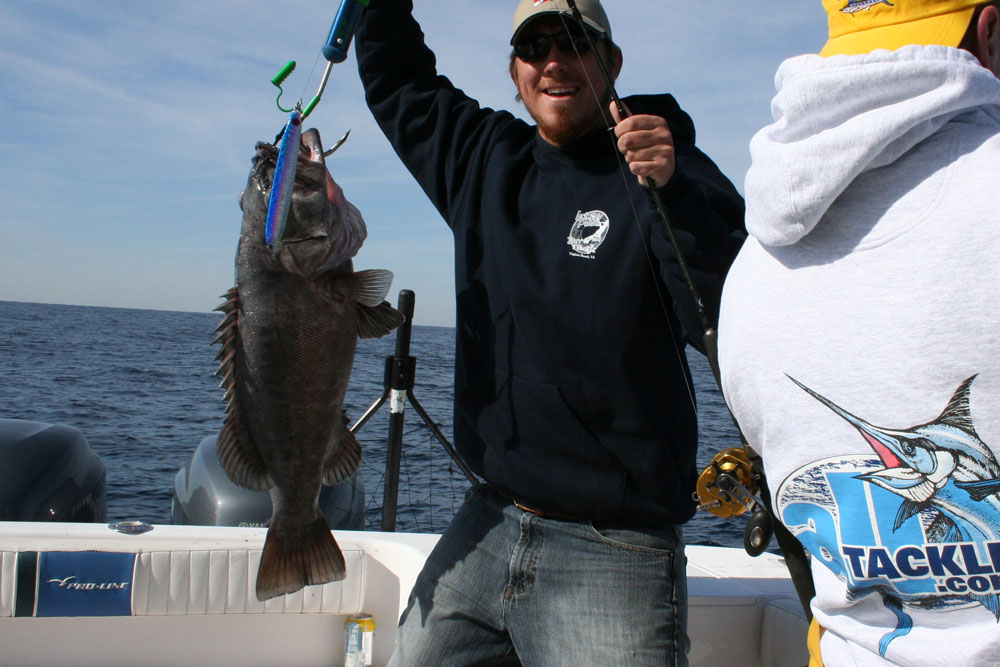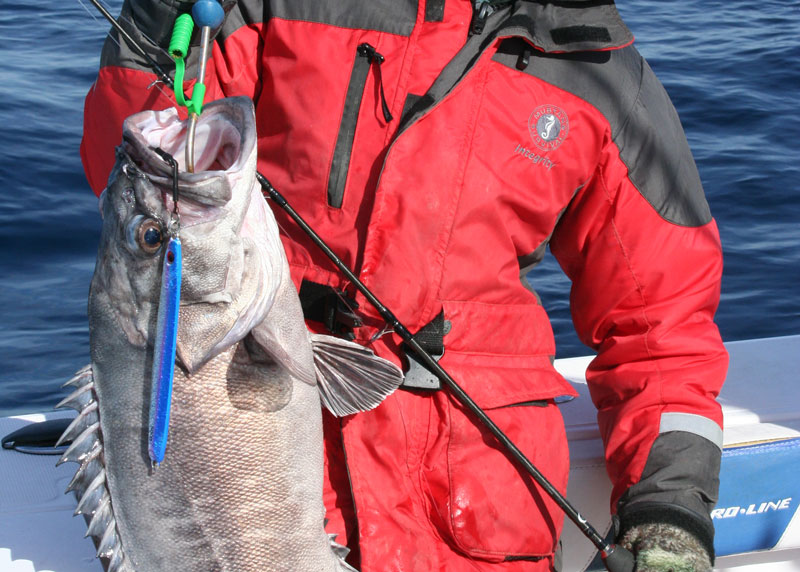When the tuna action is slow it's time to take a shot at deep-water bottom-dwellers like blueline tilefish and knot-head sea bass, and out Bass 'N Blue Offshore Bottom Fishing video shows how it's done, but sometimes you want to try something different. Very different. Golden tilefish is another cool and less common deep-dropping catch. But a even rarer one is the wreckfish.

Very similar to grouper, this species does require some specific tactics if you want to target it in particular. To hook into a wreckfish, remember to:
- Fish a bit deeper than you usually would for bluelines and bass, and a bit shallower than you would for golden tilefish. While you may encounter wreckfish in 300 feet of water, the chances go way up when fishing in the 400 to 500 foot range. (Yes, you will still get bluelines at the upper range of this zone, though their number do tend to thin out as you get deeper and deeper). Push out to more than 800 feet or so and the wreckfish will thin out.
- Find hard, rocky bottom. These fish aren’t inclined to hang around areas where there’s sand or mud, unless there’s a wreck. Find hard bottom, however, and you have a shot at ‘em. As long as you fish with braid, you’ll be able to feel the difference between hard bottom and soft bottom when your weight or jig bounces off of it. You want to feel a sharp ping, as opposed to a soft plop.
- Try meat-jigging with a jig of 500 or more grams. This tactic is deadly on wreckfish. If you’re not familiar with it, the drill is simple: rig your jig with top and bottom hooks, then bait one hook with a chunk of squid (for maximum temptation) and another with a chunk of fish (for maximum toughness in case you miss a bite or two). Drop to bottom, then hover it just a few feet above and allow the wave action to raise and lower the jig.
- If you snag bottom, don’t break off your jig. Instead creep the boat up until your line is vertical, so you’re directly overtop the snag, and drop some more baits down there. Yes, it’s a bit risky because you might lose more rigs. But the fact that you snagged in the first place indicates that you’re over some gnarly structure — which is exactly what the wreckfish like. Take advantage of your discovery.

One final word fo advice: if you're fishing on a wreck make sure to use a rod with plenty of backbone and line of at least 40 pound test, and when you get a fish on the line, push the gear to its limit to move the fish away from the structure. Otherwise, it will try to swim into cover and there's a good chance you'll end up snagged.

Editor's note: This article was originally published in December of 2017 and was last updated in August of 2025.